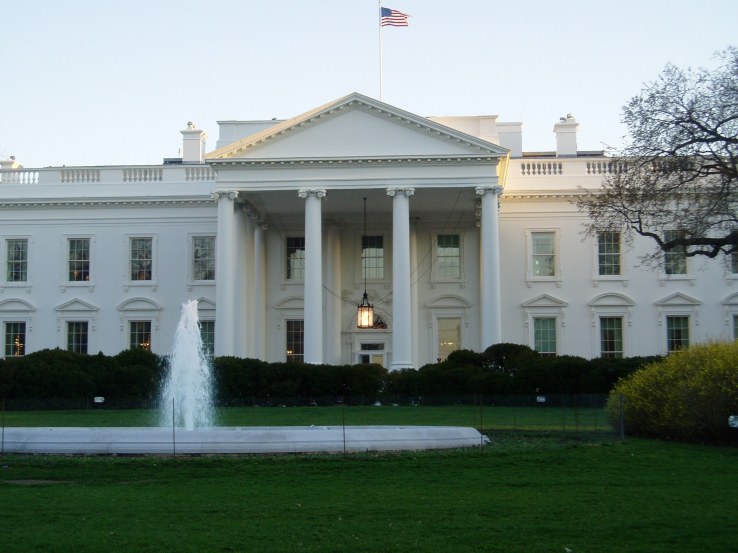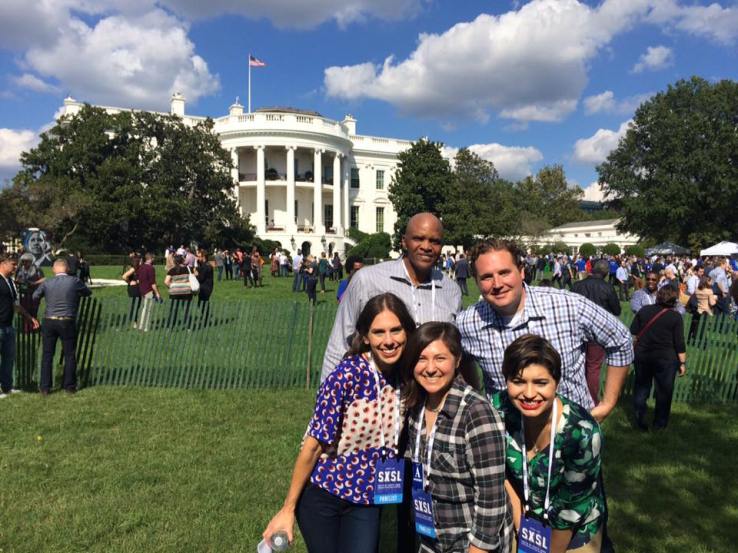How to feed the world with sensors, data and local production

Today, food and agriculture entrepreneurs took the stage at the White House lawn for SXSL 2016 to discuss the potential and limits of technology to feed a burgeoning world population. According to the most recent available estimates from the United Nations Food and Agriculture Organization (FAO) 793 million people in the world do not have enough to eat today.
And with a global population expected to grow to 9 billion by 2050, the U.S Agency for International Development (US AID) expects that agricultural production will need to increase by at least 60% from current levels to serve our nutritional needs.
The founder of Food + Tech Connect — a media company that focuses its reporting and events on improving our global food systems — Danielle Gould, moderated the discussion.
Gould pointed out that in recent years, consumers have been driving big trends in food production and retail — they want more food that’s produced locally, organically, and with ingredients that are clearly listed by producers.
Retailers like CostCo, Whole Foods and Meijer are all selling local and organic food today, Gould noted. While consumer packaged goods juggernauts have lost billions in the past decade as consumers rejected their chemical-laden products, and flocked instead towards brands with more of a natural bent.

SXSL 2016 – Feeding the Future panelists (clockwise from top left): Will Allen, Caleb Harper, Danielle Gould, Nikiko Masumoto and Maria Rose Belding.
The founder of Growing Power Inc., Will Allen, said these trends are a good thing, and could encourage a more distributed and equitable approach to food production. But such consumer demands can only be met if the U.S. makes an investment in new agricultural infrastructure, Allen suggested.
Growing Power advocates for and teaches urban agriculture in order to bring nutritious, fresh foods and food-related jobs into neighborhoods that lack access to them otherwise.
Allen specifically spoke of indoor, greenhouse, hoop house, rooftop and wall farms, all built using technologies that can partially replace outdated methods that he said are depleting our soil and other environmental resources.
He lamented that large, outdoor farms, due to climate change and pollution, have become unsustainable, whether they’re raising fruit in tropical climes and shipping it to cold weather states, or cultivating fish in the oil-polluted waterways of Louisiana.
A peach farmer and author named Nikiko Masumoto, with Masumoto Family Farm, added that inspiration and inclusiveness should be part of the country’s investments in agriculture.
She and Allen both referenced the fact that the current generation of farmers are quickly aging and will soon be hoping to retire.
While she grew up in the industry, she said, farming has not held a public image as an inclusive industry, welcoming of women and men of different ages, races or sexual orientation.
Maria Rose Belding, a co-founder of MEANS database, spoke of accessibility of another kind.
“Access to good food can happen in low income communities, but good food is not a given. It is not available to everyone at a price that everybody can afford. It’s really important to recognize that even if we can advance [the production and distribution of] good food for people living above the poverty line, we have to also do it for people living below,” she said.
MEANS Database is a tech non-profit in the food recovery business. It works with groceries, restaurants, caterers and other food businesses that have excess inventory to adhere to state and federal health laws, but get that inventory to pantries and other organizations that can feed hungry people.
Rose Belding also said, “You should not have to pay to do the right thing,” in order to help feed the world.
A director for MIT’s Open Agriculture lab, Caleb Harper, said he agreed. Too often, discussions about hunger and climate change feel dire and hopeless, he said. He attributed part of that hopelessness to the fact that farmers have lost some of their communal power to corporate practices, namely companies staking out intellectual property claims around technologies that can help produce more or better foods.
Harper’s team of researchers and engineers are aiming to infuse some optimism into the industry, in several ways.
MIT Open Ag is teaching kids and techies about food, hoping to turn some of them into farmers. And they’re building a massive, open database of agricultural data, and agtech software, so that anyone who wants to get involved in feeding the world can do so without paying a lot to get started or keep a competitive edge.
Across the board, panelists said they were eager to see new technologies like sensors and chemical analysis give consumers great information about their food, and to see how an increasingly distributed food system — comprising rooftop, indoor, greenhouse and other farms — could begin to eradicate hunger and create new jobs in urban neighborhoods across the U.S.
No comments:
Post a Comment